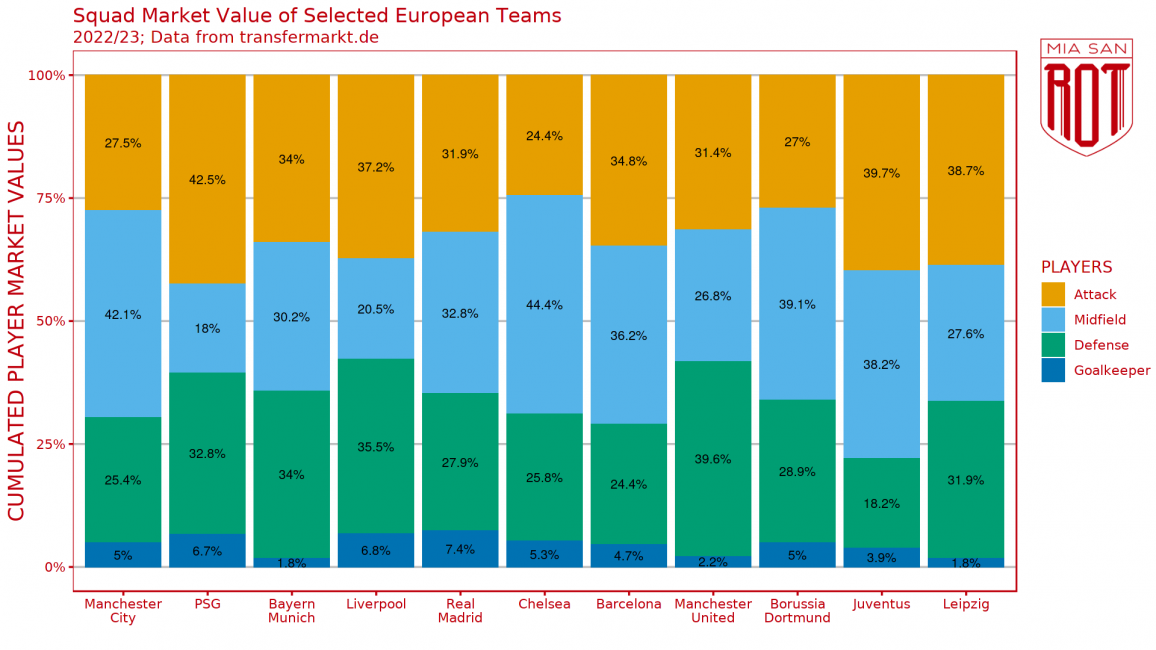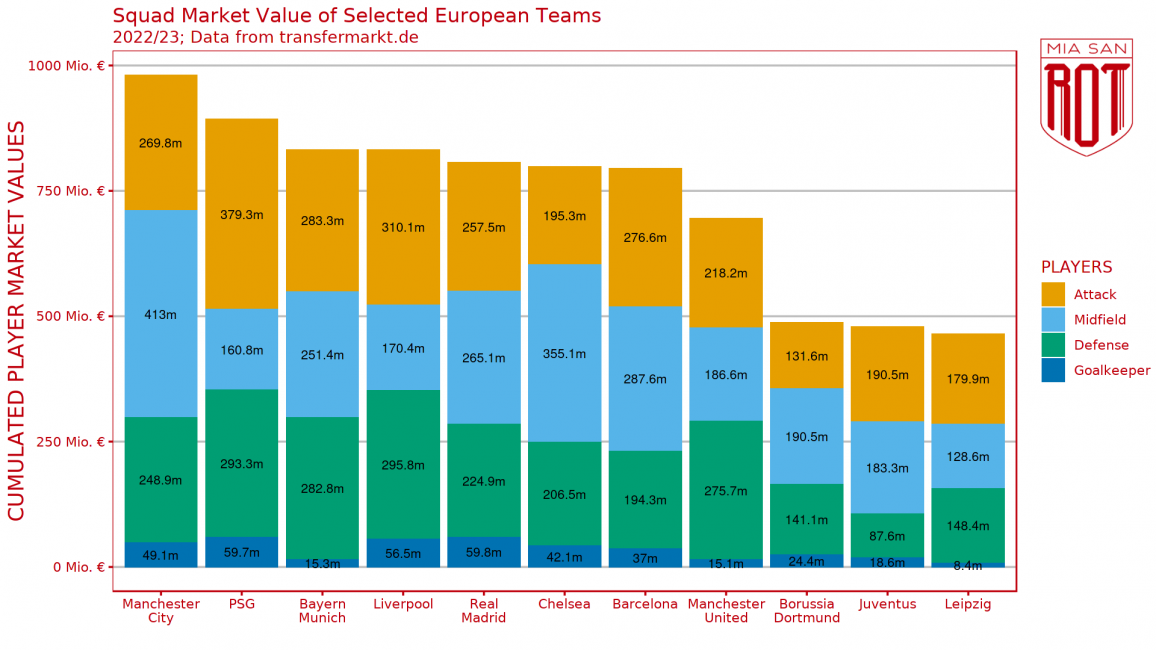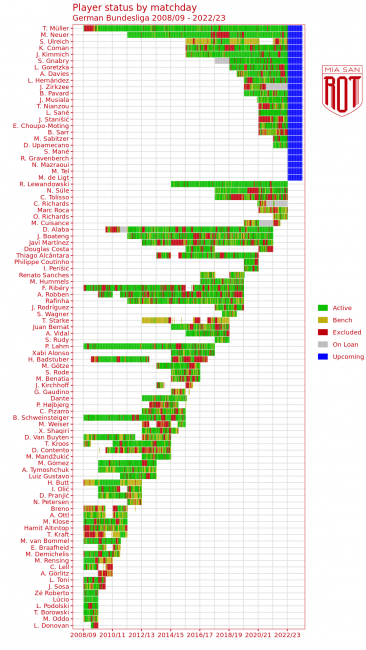Miasanrot stats corner – analyzing FC Bayern’s transfer window
Since the beginning of the pandemic, those in charge at FC Bayern have been at pains to emphasise the extraordinary financial burden the pandemic has imposed on the club. Various sources mention reduced revenues of €150 to 200 million. The partly costly transfers (made so far) for the coming 2022/23 season have thus surprised many observers, as FC Bayern were known for a rather conservative approach in the transfer market, even before pandemic-related revenue hits and more difficult-to-assess risks. Certainly, there have been some transfers in recent years that showed that they still mean to stay abreast of the other big European clubs when it comes to spending (think, for example, of the record fee for Lucas Hernández or the unusually risky signing of Renato Sanches for a significant fee).
Nevertheless, a new spending record (of at least €137 million so far) and in particular the added quality on paper was not necessarily foreseeable in this way. The loss of Robert Lewandowski, combined with an arguably convincing strategic outlook from Oliver Kahn and Hassan Salihamidžić, seems to have convinced FC Bayern’s supervisory bodies that a somewhat more aggressive transfer approach is necessary (and financially feasible) to continue to compete at the top of Europe.
Transfer Expenditures
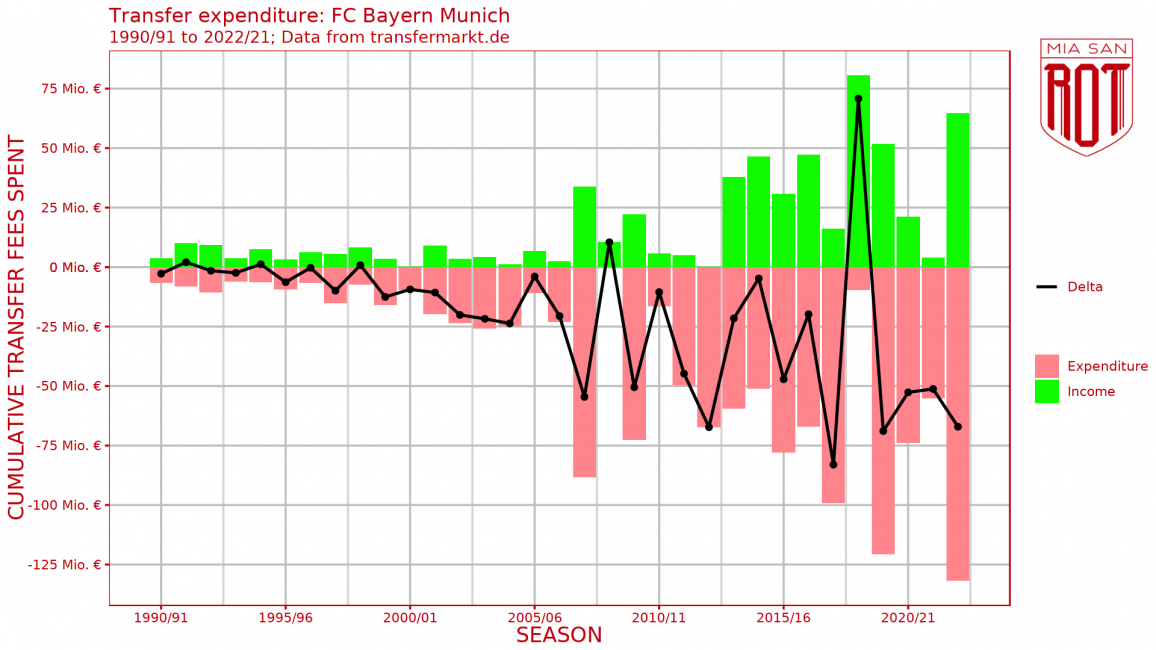
The above chart shows the steadily increasing transfer fees paid since the 2007/08 season, but it also shows that while the total transfer fees paid mark a new record, the income has also almost reached the record level of the 2018/19 season, meaning that the difference between expenditure and income only ranks fourth (after the 2017/18, 2019/20 and 2012/13 seasons).
In addition to the pure transfer fees, it is worth taking a look at the players FC Bayern have signed. The departure of Robert Lewandowski, which was probably the most significant loss from a sporting point of view, was only indirectly compensated for by the addition of Sadio Mané, while the largest financial outlay was made on centre-back Matthijs de Ligt. This was probably to compensate for the departure of Niklas Süle and the general difficulties in the defence in the pre-season on the other.
A look at the player positions for which FC Bayern had transferred transfer fees in recent decades reveals some interesting aspects:
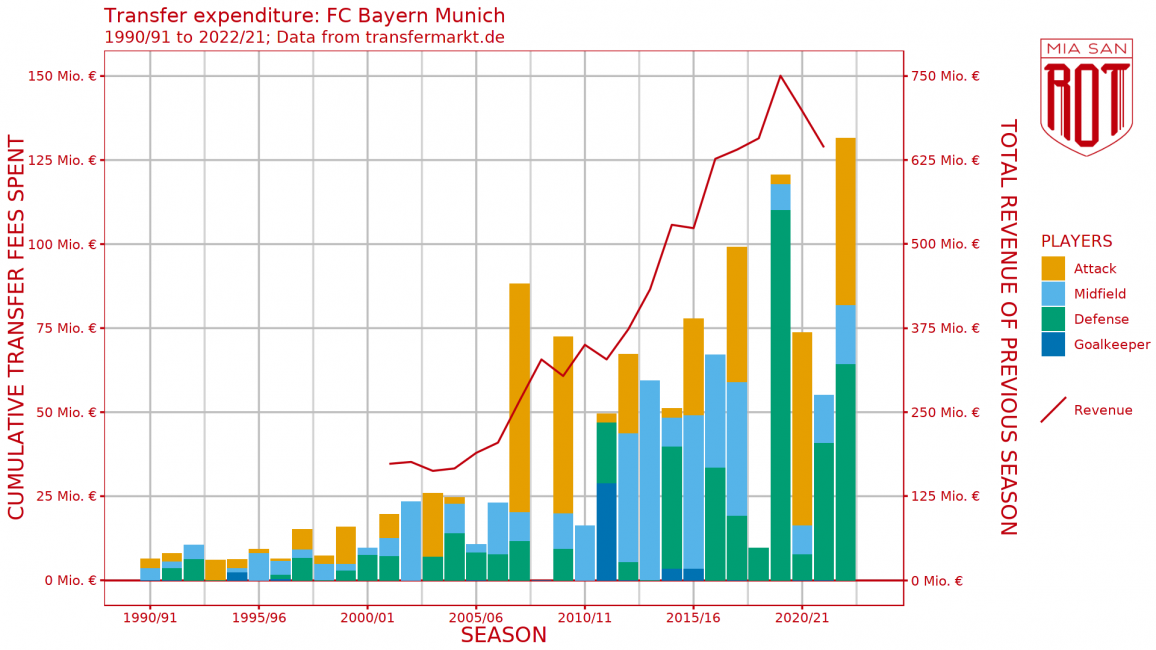
First of all, it stands out that the amounts involved have followed a clear upward trend since around 2007, in line with FC Bayern’s revenue. Only the pandemic was able to halt this trend for the time being.
In addition, there are interesting patterns to be found in the players signed since the 2007/08 season. With Ribéry, Klose, Robben and Gómez, the focus was initially on the offensive positions. Then, between 2012 and 2017, there were major investments in midfielders – probably related to the signing of Pep Guardiola. In the last four seasons, it was mainly defenders who were able to coax FC Bayern into make larger investments. But the offensive positions are also represented, especially with Leroy Sané and Sadio Mané.
Market Values
Transfer fees can certainly provide exciting insights into transfer strategies. However, players from the club’s own youth (e.g. Thomas Müller), young talents (e.g. Jamal Musiala) or transfers on a free (e.g. Robert Lewandowski) are not properly represented in this view. Therefore, it is also worth taking a look at the overall squad composition based on the market values estimated by transfermarkt.de:
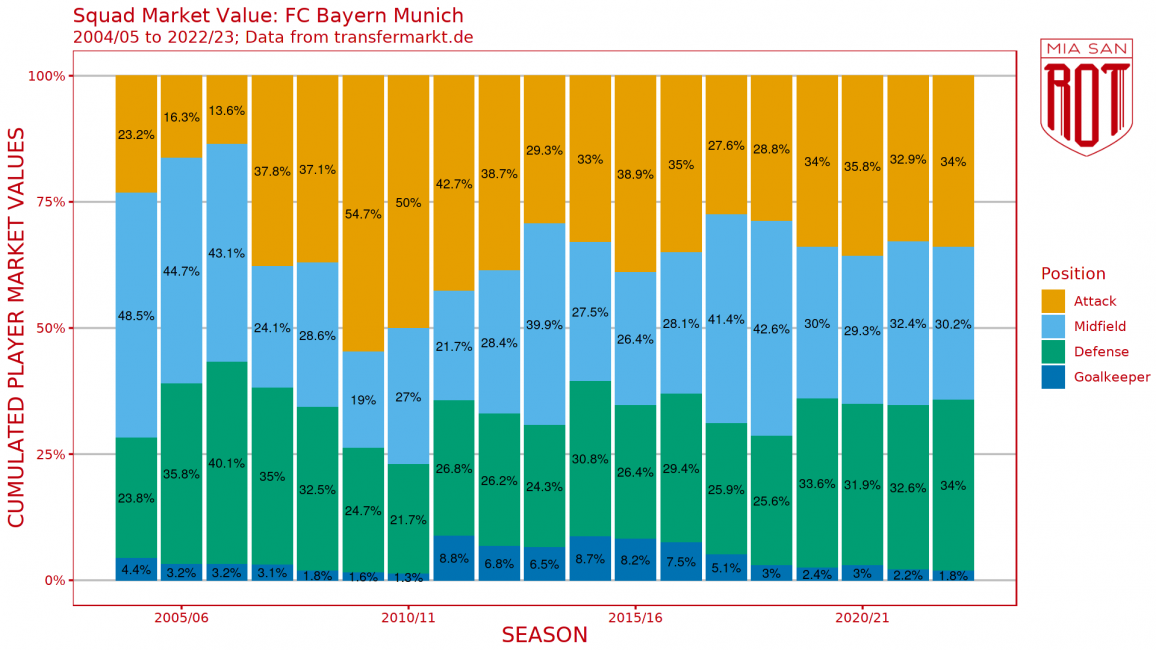
Here, too, there are some limitations that need to be considered. For example, market value is not the same as actual quality on the pitch, as factors such as age and seniority play a significant role here. It should also be mentioned that market values are only rough estimates, which are calculated on the basis of the transfer fees paid for similar players.
Nevertheless, the data reveals certain trends. It is interesting to note, for instance, that FC Bayern have a fairly balanced squad in terms of market values despite expensive additions and departures over the last four years.
An analysis of the absolute market values again shows a strong consistency since 2017/18.
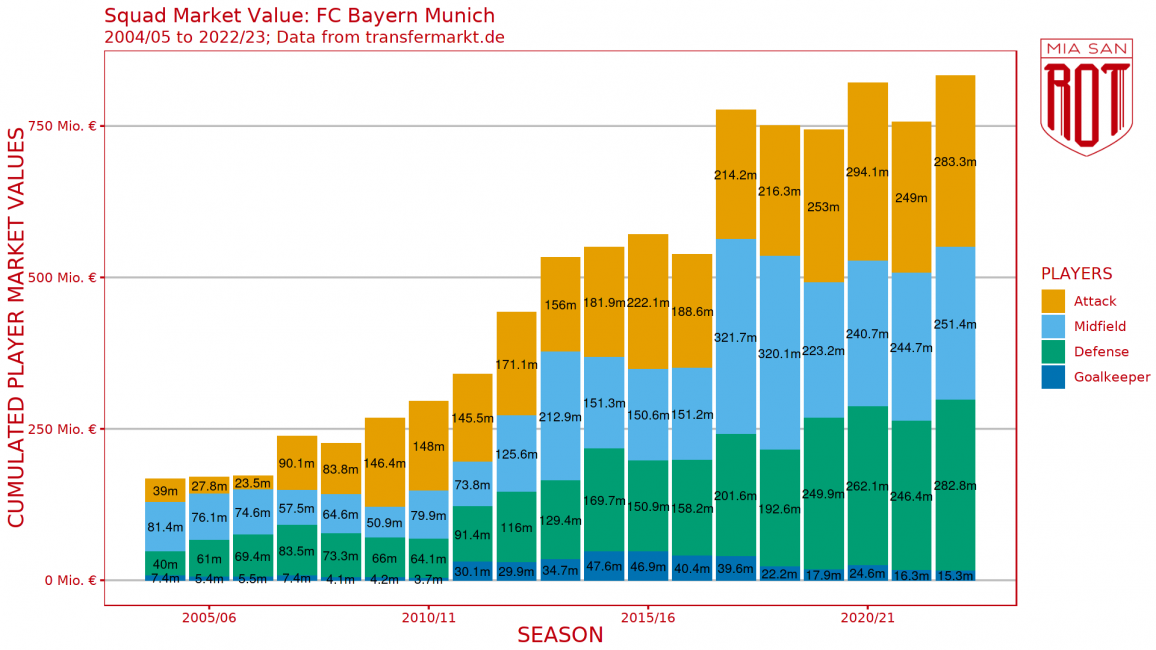
Conclusion
In the end, a look merely at the numbers does not make this summer’s transfer window seem especially exceptional. Nevertheless, the additions seem to spark a lot of enthusiasm among many fans and also neutral observers. Whether the overarching strategy and the large investment will ultimately turn out to be a success remains to be seen. Regardless, the coming season should certainly be very interesting and answer many of our questions:
- Will the Bayern team manage to absorb the loss of Lewandwoski as a collective?
- Will Mathys Tel follow in the footsteps of Alphonso Davies or rather those of Renato Sanches at FC Bayern?
- Will Thomas Müller be able to make his usual outrageous number of assists without Robert Lewandowski there to provide them to?
- Can Matthijs de Ligt become the new leader in defence he is meant to be?
- Who will form the central midfield pairing going into the season’s crunch time?
- Will Leroy Sané return to his former strength?
- …
Only time will tell.
Coda
